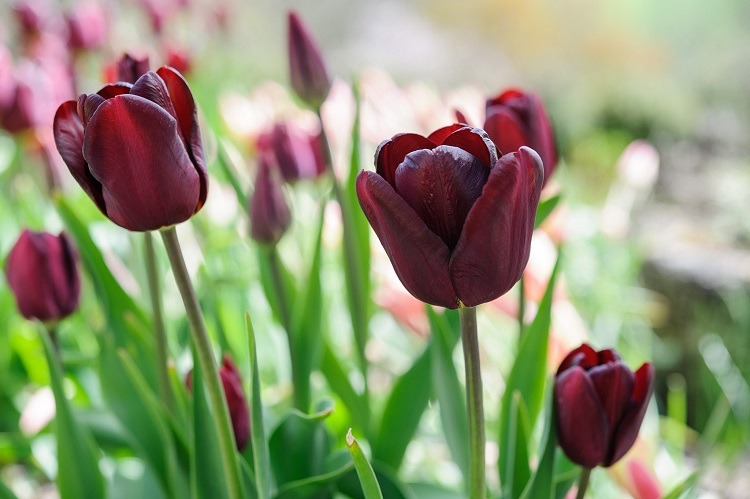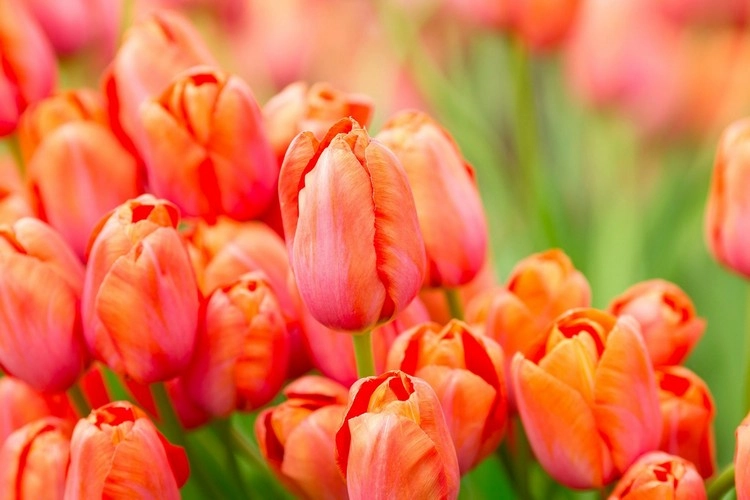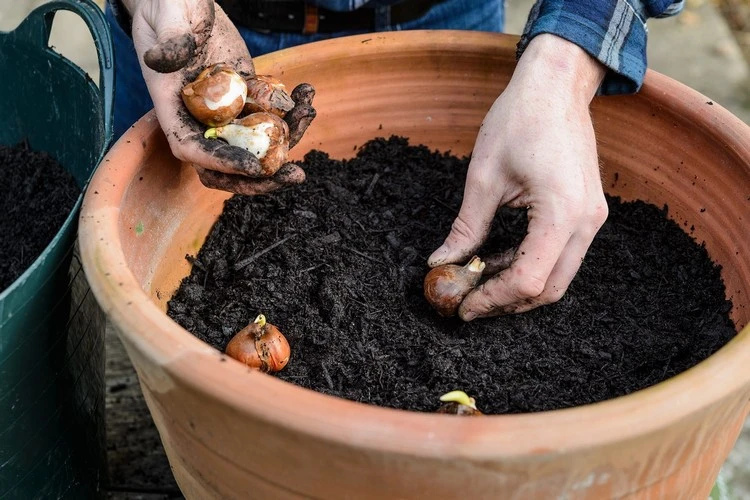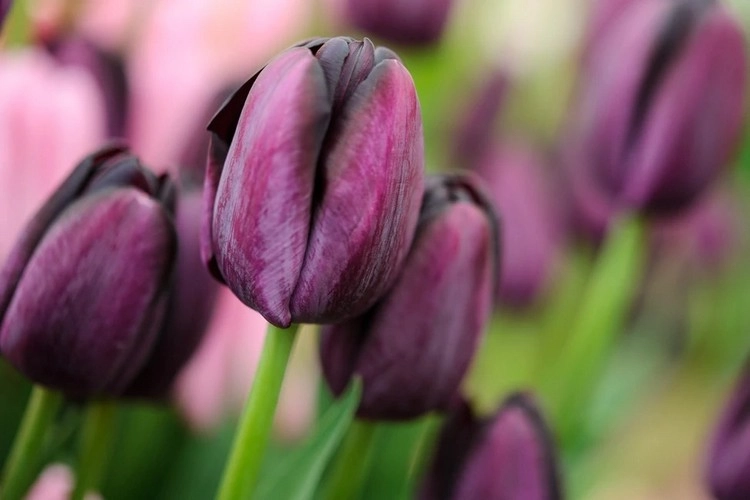Tulips are spring bulbs that gardeners plant in mid to late fall for good spring flowering. In this article you will find out everything that you should know about planting tulips in fall, what the different varieties are and when they bloom.
Planting tulips in fall – what you should know

Are tulips perennial? Tulips are technically perennial, but years of breeding for the most beautiful flowers means that many varieties only flower for one year. Some tulips bloom earlier than others – early bloomers bloom from late March to April, mid bloomers bloom from April to May and late bloomers bloom in May. If you grow a mix of different varieties, you can extend the flowering period. You can also mix flower shapes, heights and colors. Mixing tulips can be quite an art, but you can buy ready-to-plant mixes at garden centers or online.
Tulip varieties and flowering times

Early Tulips (late March to April)
- Single Early Tulips – some of the earliest tulips, usually blooming in late March or early April. Single, cup-shaped flowers on sturdy stems. Try Apricot Beauty or Princess Irene.
- Double Early Tulips – Long lasting, double flowers that resemble peonies on short stems blooming early to mid-April. Try the Verona tulip, with light yellow flowers.
- Kaufmanniana hybrids – water lily-like flowers. One of the most reliable perennial varieties.
- Species/Botanical Tulips – Small and delicate (10-15cm tall) but sturdy and long-lasting. They are ideal for rock gardens, gravel gardens, containers or the front of a border. They come back year after year and seed themselves if you don’t depilate them. Some bloom early, others later in the season.
Mid Season Tulips (April to May)
- Triumph Tulips – Hardy tulips with stout stems that bloom in April. Good for a windy location. Try the lipstick pink ‘Barcelona’, the red and yellow ‘Abu Hassan’, or the orange ‘Cairo’ or ‘Brown Sugar’.
- Darwin hybrids – tall tulips with large, cup-shaped flowers. The stems are very strong and wind resistant. Reliable perennial. Try Apeldoorn or Apricot Beauty.
- Fosteriana hybrids – these have slender, closed flowers that open wide in full sun. They sometimes have purple or brown markings. Formerly known as Emperor Tulips. Try the stunning white tulip ‘Purissima’.
Late Tulips (May)
- Single late/Darwin-oval flowers on tall, strong, wind-resistant stalks. Try the dark purple ‘Queen of the Night’ tulip, the peachy ‘Menton’ tulip or the white ‘Maureen’.
- Double late bloomers/peonies – one of the last tulips to bloom and very long lasting. The large flowers look like peonies. Try the beautiful peach colored Tulip ‘Angelique’.
Planting tulips in autumn – in the garden & pot

Planting Tulips in Fall – Garden: Choose a sunny spot with good drainage. These plants do not grow well in the shade and will rot in moist soil. Soil preparation in the fall is important for tulip care. Dig up the site and loosen the soil to a depth of about 30 cm. Add some compost or dry fertilizer to the soil. Also add some 5-10-5 or 5-10-10 granular fertilizer to encourage bulb growth.
Mix the existing soil, additives, and fertilizer until well combined. If you have prepared the location for the tulips well, you can easily dig out the individual planting holes. You should dig each hole three times as deep as the height of the tulip bulb. There should be twice as much soil over the top of the bulb as the height of the bulb.
Plant the bulbs in groups of ten, 5 cm apart. Place the bulb so that the pointed end is facing up. Don’t worry if some of them are upside down. They should still flower, but they take longer to emerge from the soil in spring and may not be as tall as they should be.
Planting Tulips in Fall – Pot: Tulips grow excellently in pots. Fill the pot halfway with multipurpose peat-free soil and plant the bulbs at a depth three times their height, a few inches apart. You can also combine tulips with other spring varieties.
When exactly you should plant tulips in fall

Tulip bulbs can be planted from mid-October, but November is considered the best time as it reduces the risk of a fungal disease called tulip blight, which is killed off in colder weather. You can also plant tulip bulbs in December or even January – they will then flower in spring. If you forgot to buy bulbs, you can buy potted tulips from the garden center in spring.
Possible problems and their solutions
Tulip fire (Botrytis tulipae) is a fungal disease that is particularly bad during wet seasons as the spores are spread by wind and rain. Symptoms include distorted and stunted shoots and leaves, as well as unsightly brown spots throughout the plant. If your plants are infested, remove and burn them and do not plant tulips in the same spot for at least two years. If you store bulbs from year to year, prevent this problem by soaking them in a fungicide solution. If you plant the bulbs in and after November, the risk of the disease should be lower.
Fun fact: Are tulips poisonous?
Tulips are poisonous. They contain alkaloid glycosides in all parts of the plant except the petals, with the highest concentration found in the tulip bulb. Humans, dogs, cats, horses, farm animals, rabbits, hamsters and guinea pigs can be poisoned by tulips. Symptoms depend on the amount ingested.
